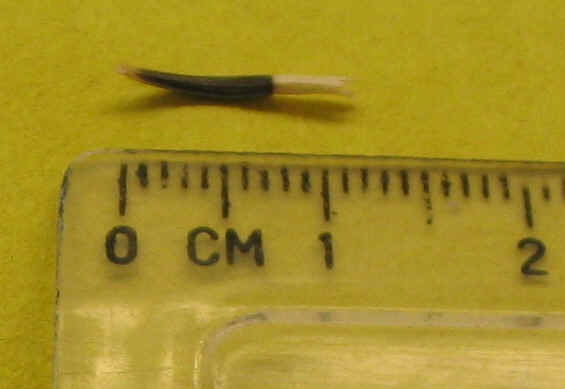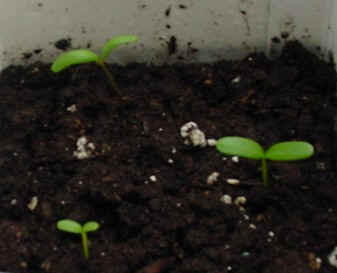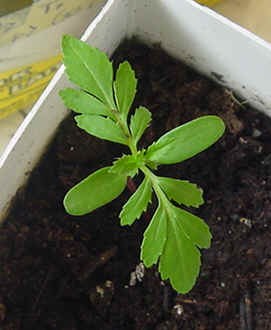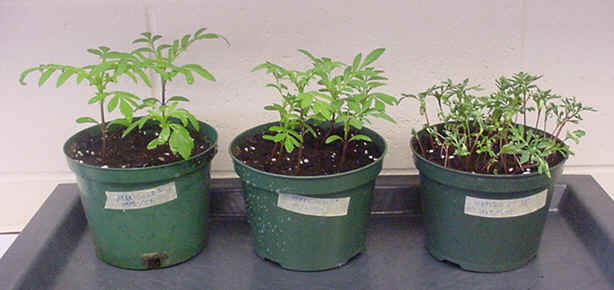


 seeds / development
Seed viability and Growing
How
Seeds are Formed (backup)
Forgotten Seeds
seeds / development
Seed viability and Growing
How
Seeds are Formed (backup)
Forgotten SeedsSeeds 

![]()

 seeds / development
Seed viability and Growing
How
Seeds are Formed (backup)
Forgotten Seeds
seeds / development
Seed viability and Growing
How
Seeds are Formed (backup)
Forgotten Seeds
A seed is made up of three parts: an outer protective coat, a food supply under the seed coat (endosperm), and an embryo of a young plant. The protective coat prevents sprouting until ideal conditions exist.
For germination, the dormant seeds need water, oxygen, and proper temperature in order to germinate. Some need light and other require darkness.
 Seeds
come in many different, sizes, shapes and colours. This is a Marigold seed.
Seeds
come in many different, sizes, shapes and colours. This is a Marigold seed.
The seed is planted in a container filled with a growing medium (potting mixture) with drainage holes in the bottom. The seed is planted to the correct depth, watered, and the pot is covered with a plastic bag to maintain a moist environment.
When a seed is exposed to the proper conditions, water and oxygen are taken in through the seed coat. The embryo (baby plant) begins to enlarge, the seed coat breaks open, and the root emerges followed by the shoot that contains the leaves and stem.
Reasons for poor germination: over watering cuts off oxygen to seed, planted too deep causing too much energy to be used to reach the soil surface, too dry not starting germination, incorrect temperature - some seeds need a period of cold temperatures.
 When
a plant germinates it will have one (monocotyledons) or two (dicotyledons)
cotyledons (seed leaves). These are not true leaves.
When
a plant germinates it will have one (monocotyledons) or two (dicotyledons)
cotyledons (seed leaves). These are not true leaves.
These Marigold sprouts are dicotyledons, having two cotyledons.
An example of a monocotyledons is a bean.
These are followed by the first true leaves which are small replicas of mature ones.
 Once
the seedlings have developed their first set of true leaves, it's time to give
them more room to grow either by thinning (cutting off the unwanted seedlings)
or transplanting them into larger containers. When transplanting hold the plants
by the seed leaves not the true leaves or the stem which is broken could damage
or kill the plant.
Once
the seedlings have developed their first set of true leaves, it's time to give
them more room to grow either by thinning (cutting off the unwanted seedlings)
or transplanting them into larger containers. When transplanting hold the plants
by the seed leaves not the true leaves or the stem which is broken could damage
or kill the plant.
You may also have planted the seeds in containers large enough to hold the mature plants thus not requiring thinning or transplanting.
Keep in mind that these seedlings will grow into mature plants requiring more room to grow and their roots will compete for space and resources (oxygen and food).

These Marigolds were planted on the same day and germinated using the same conditions. The one on the left contains three plants, the middle one contains six plants and the right one contains fifty-three plants.

Three weeks after planting the Marigolds look like this following a long weekend. The long weekend created stress from which the first two containers were able to recover but not the third container.
Activities: Growing a maple tree